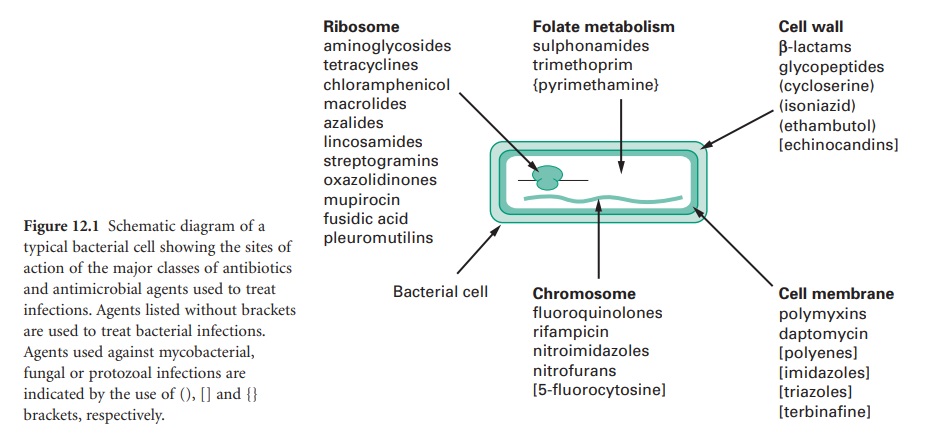Introduction - Mechanisms of action of antibiotics and synthetic anti-infective agents
| Home | | Pharmaceutical Microbiology | | Pharmaceutical Microbiology |Chapter: Pharmaceutical Microbiology : Mechanisms of action of antibiotics and synthetic anti-infective agents
The antibiotics and synthetic anti-infective agents described in Chapter 11 are used to treat infections caused by bacteria, fungi and protozoa. Most exert a highly selective toxic action on their target microbial cells but have little or no toxicity towards mammalian cells.
MECHANISMS OF
ACTION OF ANTIBIOTICS AND SYNTHETIC ANTI-INFECTIVE AGENTS
INTRODUCTION
The antibiotics and synthetic
anti-infective agents described in Chapter 11 are used to treat infections
caused by bacteria, fungi and protozoa. Most exert a highly selective toxic
action on their target microbial cells but have little or no toxicity towards
mammalian cells. They can therefore be administered at concentrations
sufficient to kill or inhibit the growth of infecting organ-isms without
damaging mammalian cells. By comparison, the disinfectants, antiseptics and
preservatives described in Chapter 17 are too toxic for systemic treatment of
infections. Figure 12.1 illustrates
the five broad target areas of the major groups of antibiotics and synthetic
agents used to treat microbial infections. Note that most of the agents are
selective antibacterials; relatively few agents are available for treatment of
fungal or protozoal infections. Study of the mechanism of action reveals the
basis for the selective toxicity.
Figure 12.1 Schematic
diagram of a typical bacterial cell showing the sites of action of the major
classes of antibiotics and antimicrobial agents used to treat infections.
Agents listed without brackets are used to treat bacterial infections. Agents
used against mycobacterial, fungal or protozoal infections are indicated by the
use of (), [] and {} brackets, respectively

Related Topics
